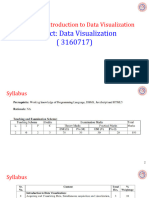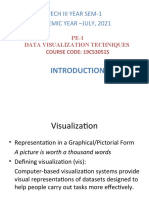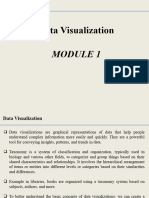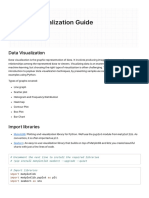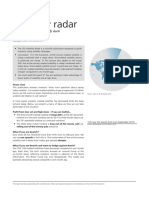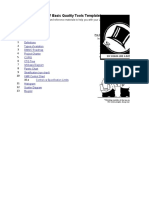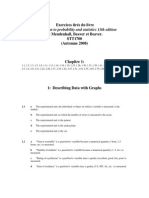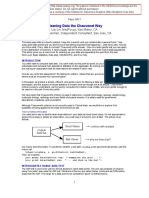0% found this document useful (0 votes)
45 views103 pagesData Visualization New
The document provides an overview of data visualization (DV), including its definition, importance, benefits, and various techniques and tools used in the field. It highlights the roles of DV in different sectors such as education, business, and military, and outlines the steps involved in creating effective visualizations. Additionally, it discusses programming techniques and specific tools like Tableau, Python, and R that facilitate data visualization.
Uploaded by
deepaaCopyright
© © All Rights Reserved
We take content rights seriously. If you suspect this is your content, claim it here.
Available Formats
Download as PPT, PDF, TXT or read online on Scribd
0% found this document useful (0 votes)
45 views103 pagesData Visualization New
The document provides an overview of data visualization (DV), including its definition, importance, benefits, and various techniques and tools used in the field. It highlights the roles of DV in different sectors such as education, business, and military, and outlines the steps involved in creating effective visualizations. Additionally, it discusses programming techniques and specific tools like Tableau, Python, and R that facilitate data visualization.
Uploaded by
deepaaCopyright
© © All Rights Reserved
We take content rights seriously. If you suspect this is your content, claim it here.
Available Formats
Download as PPT, PDF, TXT or read online on Scribd
/ 103




